
Analysis of Reliable Transmission Performance Optimization Methods for Satellite-to-Ground Laser Communication Links
Electronics受け取った 11 Jul 2024 受け入れられた 23 Jul 2024 オンラインで公開された 24 Jul 2024
ISSN: 2995-8067 | Quick Google Scholar


受け取った 11 Jul 2024 受け入れられた 23 Jul 2024 オンラインで公開された 24 Jul 2024
The satellite-to-ground laser communication link plays a crucial role in addressing the technical bottleneck of high-speed information transmission between satellite and ground networks. However, the impact of atmospheric channel conditions poses challenges to the link performance. To overcome these challenges, this paper presents a comprehensive analysis of the characteristics and influencing factors of the satellite-to-ground laser communication link. It summarizes methods for optimizing the transmission performance of the link and proposes approaches for optimizing, monitoring, and predicting the link performance through factors such as the optimization of ground station quantity and location, link availability, link transmission quality, and adaptive coding and modulation. These methods enable the optimization of the transmission performance of the satellite-to-ground laser communication link, thus significantly contributing to the realization of high-speed and reliable laser communication between satellite and ground networks.
The integration of ground networks and satellite networks is considered the future direction of network development, providing seamless global access and services for ground users []. High-speed, secure, and reliable satellite-ground backbone link transmission is a key requirement for achieving the integration of ground and satellite networks. Space laser communication is a wireless communication technology that utilizes optical waves as carriers. It offers advantages such as high data rates, large capacity, strong anti-interference capabilities, and high security, which are difficult to achieve with traditional microwave communication. Space laser communication can significantly enhance the transmission performance of satellite-ground backbone links. However, the availability and reliability of satellite-ground laser communication links are affected by atmospheric channel environmental factors such as clouds, fog, aerosols, and atmospheric turbulence. These factors pose challenges in meeting the real-time transmission requirements of massive data in the integrated ground-satellite network. Addressing the optimization of performance for low-availability satellite-ground laser links and ensuring reliable transmission of high-speed data flows between ground and satellite networks are critical issues that need to be resolved for the construction and operation of future integrated space-ground information networks.
Satellite-to-ground laser communication, characterized by high data rates, large information capacity, strong anti-interference capability, and high security, has emerged as a promising technology []. The utilization of laser communication links between satellite and ground networks can significantly enhance transmission performance. In recent years, numerous experiments have been conducted worldwide to validate the performance of satellite-to-ground laser communication links. In 2022, NASA conducted the TBIRD experiment, successfully achieving a transmission rate of 100 Gbit/s, thereby confirming the feasibility of high-speed laser communication between satellite and ground. Subsequently, in 2023, NASA deployed laser communication terminals on the Pathfinder Technology Demonstrator (PTD) 3U CubeSat platform, achieving a transmission rate of 200 Gbit/s and further validating the practical performance of high-speed laser communication between satellite and ground. China has also made significant progress in satellite-to-ground laser communication technology. In June 2023, the Jilin-1 satellite conducted a laser communication test, successfully achieving a transmission rate of 10 Gbit/s between the satellite and the ground. These experiments have demonstrated the potential of satellite-to-ground laser communication links in high-speed data transmission and have provided a solid foundation for the development of satellite-to-ground laser communication technology.
The aforementioned experiments have only verified the feasibility of high-speed transmission in satellite-to-ground laser communication links. However, achieving long-term, high-speed, and reliable transmission remains a challenge primarily due to the adverse effects of atmospheric channel conditions, which cannot be effectively mitigated. The influence of atmospheric channel conditions can take various forms, including cloud cover, atmospheric absorption and scattering, multipath effects, and atmospheric turbulence. These factors result in phase fluctuations, intensity fluctuations, beam drift, and beam spreading during the transmission process, as shown in Figure 1, significantly degrading the transmission performance and reliability of the satellite-to-ground laser communication link. Therefore, to enhance the reliability of the satellite-to-ground laser communication link and achieve long-duration, high-speed, and stable transmission, measures need to be taken to optimize the link availability and transmission performance.
Since the birth of lasers in the early 1960s, many countries around the world have commenced research on space laser communication technology. In the 21st century, the development of space laser communication technology has progressed rapidly. Countries such as Europe, the United States, Japan, and China have invested significant funds to conduct comprehensive and in-depth research on various key technologies involved in space laser communication systems, continuously driving the engineering practicality of space laser communication technology. Satellite-ground laser communication technology is an important direction in the development of space laser communication. From the late 20th century to the present, countries worldwide have conducted theoretical research and experimental verification of satellite-ground laser communication technology.
In the past three years, notable satellite-ground laser communication experiments and verifications have been conducted. NASA conducted the TBIRD (Terabit/s Beam wireless Information Relay Demonstrator) experiments around 2023 [], achieving and verifying the feasibility of high-speed satellite-ground laser communication at 100 Gbit/s and 200 Gbit/s. China’s Changguang Satellite Company also conducted a satellite-ground laser communication experiment in June 2023, successfully achieving and verifying the operational capability of 10 Gbit/s satellite-ground laser communication for practical applications. The aforementioned verification experiments have laid the foundation for the future practical engineering applications of satellite-ground laser communication technology. Table 1 provides an overview of typical satellite-ground laser communication demonstration and verification experiments.
Atmospheric turbulence is a primary obstacle in the practical application of satellite-ground laser communication. The random fluctuations in atmospheric refractive index caused by turbulence result in random variations in laser beam parameters such as optical intensity scintillation, beam spreading, beam drift, and wavefront distortion. These variations pose challenges to the operational performance and reliability of satellite-ground laser communication systems.
Optimization of the availability and transmission performance of satellite-to-ground laser communication links can typically be approached from the following aspects: Firstly, increasing and optimizing the number and layout of links can expand the selection range of satellite-to-ground laser communication links. Secondly, monitoring and predicting cloud cover and atmospheric turbulence conditions can assess the availability of satellite-to-ground laser communication links, enabling real-time link selection and switching. Furthermore, based on the evaluation of the quality of satellite-to-ground laser communication links, adaptive modulation, and coding techniques can be applied to optimize the transmission performance under current atmospheric channel conditions. Additionally, real-time detection and compensation of wavefront distortions caused by atmospheric turbulence can be achieved through adaptive optics technology, enhancing the quality of the optical signal, as shown in Figure 2.
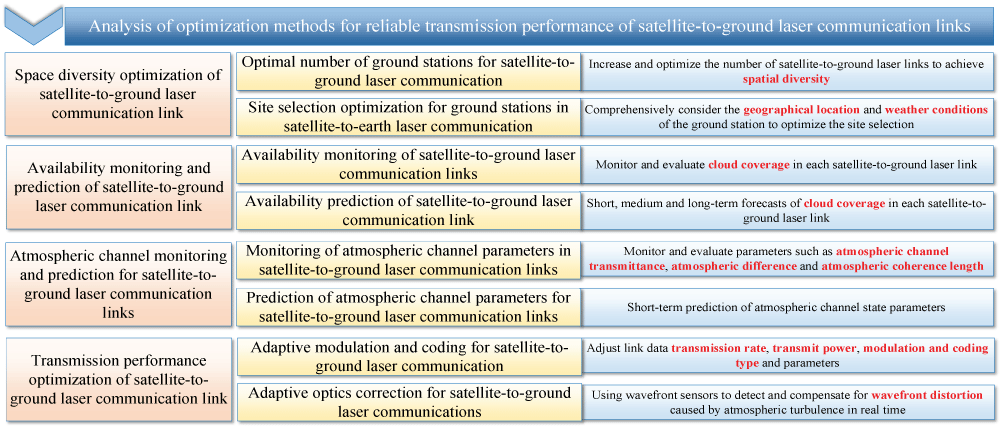 Figure 2: Schematic Diagram of Approaches for Optimizing the Transmission Performance of Satellite-to-Ground Laser Communication Links.
Figure 2: Schematic Diagram of Approaches for Optimizing the Transmission Performance of Satellite-to-Ground Laser Communication Links.Link spatial diversity and optimization: By considering the geographical locations and weather conditions of ground stations and optimizing their placement, more ground stations can be constructed to increase the number of satellite-to-ground laser communication links. As shown in Figure 3, this enables spatial diversity, reduces the probability of link interruptions, increases link capacity, and improves the availability of satellite-to-ground laser communication links []. Research conducted by Zhao, et al. demonstrated that as the availability of a single ground station increases, the required number of ground stations decreases. When the availability of a single station reaches 0.6, only three ground stations are needed to achieve a high level of availability comparable to that of RF links []. By increasing the capacity of diversity at ground stations, the number of available links between satellites and the ground can be enhanced. However, an increased number of ground stations also leads to higher costs. According to a study conducted by Kanglian Zhao’s team at Nanjing University in China, when the number of ground stations reaches 13, the availability probability of satellite-ground links can reach 0.999, ensuring at least two available links. Eylem Erdogan researched optical downlink satellite laser communication to provide reliable connectivity and site diversity. From numerous candidate sites, the optimal ground station (GS) was selected. Through simulation experiments, it was determined that using 20 ground stations, a signal-to-noise ratio of 30 dB, and appropriate measures, the interruption probability could be reduced to less than 10-10 [].
Link availability monitoring and prediction: The cloud coverage ratio and cloud thickness determine the availability of satellite-ground laser links. As shown in Figure 4, by monitoring and predicting the cloud cover and cloud intensity in each satellite-to-ground laser communication link, the availability of the links can be evaluated and predicted in real-time. Predictive analysis of cloud coverage trends assesses whether the cloud coverage ratio affects the availability of ground stations, with a time scale ranging from hours to days. Availability prediction analysis of the link determines whether the satellite-ground link is usable, with a time scale ranging from minutes to hours. Quality prediction analysis of the link assesses whether the current satellite-ground link performance is optimal, with a time scale ranging from real-time to minutes. Kanglian Zhao’s team proposed a method based on random forests for monitoring and predicting the distribution and changing trends of clouds. The method achieves a prediction accuracy of over 90% for predicting the presence or absence of clouds []. They also introduced the Cloud Prediction Network (CloudNet), which trains the model using collected cloud imagery and meteorological data from the airspace above ground stations. After the model is trained, it classifies cloud layers and predicts the motion trends of the clouds above the ground stations, allowing for the assessment of link quality based on the prediction results. Under the conditions of a prediction duration of 100 seconds and a permissible error of 5%, the prediction accuracy reaches 81% [].
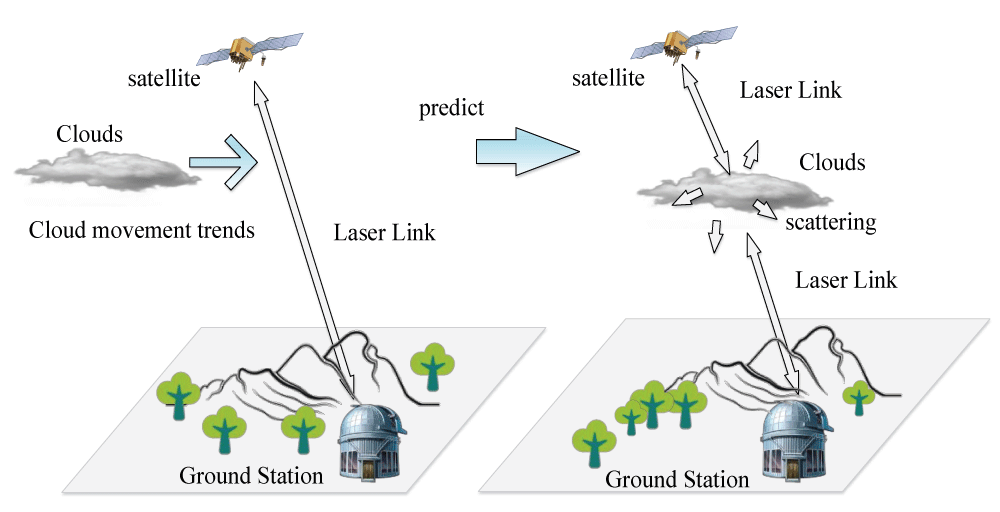 Figure 4: Illustrates a schematic diagram of cloud prediction for high-orbit satellite communication application scenarios.
Figure 4: Illustrates a schematic diagram of cloud prediction for high-orbit satellite communication application scenarios.Link transmission quality monitoring and prediction: The accuracy of predicting atmospheric turbulence intensity plays a crucial role in determining the transmission quality of satellite-ground links under the condition of link availability. as shown in Figure 5, By real-time monitoring and predicting the atmospheric channel parameters [] of satellite-to-ground laser communication links, such as transmittance, atmospheric turbulence, and atmospheric coherence length, information can be obtained to optimize the laser communication link parameters in real-time. Additionally, performing link quality prediction on a real-time to minute-scale time scale can effectively improve the transmission performance of satellite-to-ground laser communication links []. Yao Wang proposed an Artificial Neural Network (ANN) to estimate the near-surface optical turbulence. Five commonly available meteorological variables were used as inputs, demonstrating the potential of reliably estimating the near-surface refractive-index structure constant under different stability conditions []. Xu Hou introduced a new machine learning-based framework for estimating and predicting the observation-based Root Mean Square Error (RMSE) of the a8-meter height in the Antarctic dome. The estimated RMSE was 0.18 arcseconds, ranging from 0 to 2.2 arcseconds. The framework achieved a prediction RMSE of 0.12 arcseconds for the next 20 minutes, reducing the RMSE by 37% [].
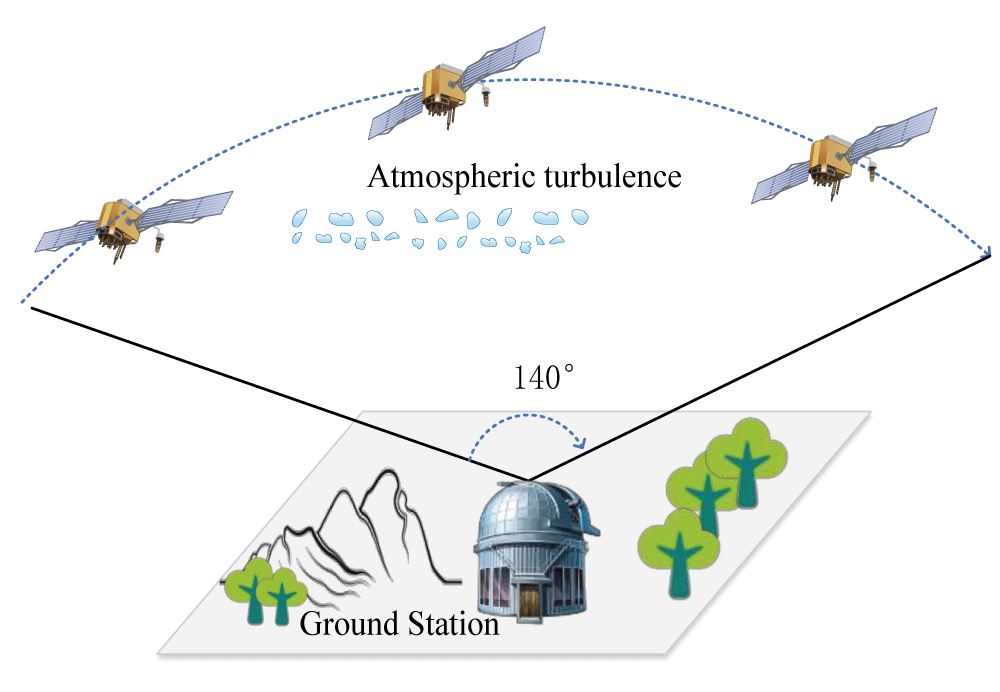 Figure 5: Illustrates a schematic diagram of link transmission quality prediction in a low Earth orbit satellite-ground laser communication scenario.
Figure 5: Illustrates a schematic diagram of link transmission quality prediction in a low Earth orbit satellite-ground laser communication scenario.Link transmission performance optimization: Utilizing the atmospheric channel state information obtained from link transmission quality monitoring and prediction, adaptive modulation and coding techniques can be applied. Based on the current channel quality prediction value and mode selection threshold, parameters such as transmission rate, transmit power, modulation scheme, and coding type can be adaptively adjusted at the transmitter []. Furthermore, real-time detection and compensation of wavefront distortions caused by atmospheric turbulence can be achieved using wavefront sensors and deformable mirrors. Alternatively, pre-distorted wavefronts can be generated to counteract the wavefront distortions caused by atmospheric turbulence, thereby improving link transmission performance parameters such as tracking accuracy and single-mode fiber coupling efficiency in laser communication systems. This enables efficient and reliable link transmission. Wang Lei proposed a signal-to-noise ratio (SNR) - turbulence intensity selection method to determine the threshold region mode. The error rates of an adaptive modulation coding system were analyzed for turbulence intensities of 0, 0.1, 0.2, and 0.3. The corresponding relationships between the three mode selections were obtained for a maximum error rate of 10-4 []. Gu Yucong proposed a modulation format recognition method based on Convolutional Neural Networks (CNN) for satellite-ground laser communication. This method enables the recognition of OOK, BPSK, QPSK, and 16QAM modulation formats for dynamic and time-varying channels without prior information [].
Application and cost issues of optimization techniques for transmission: The practical application of optimization techniques for satellite-ground laser communication link transmission performance brings about challenges such as increased system complexity, higher technical implementation difficulty, and increased costs. For instance, the proper selection of ground station locations can enhance the availability of satellite-ground links. It is necessary to research the selection of ground station locations, the spacing between them, and the number of ground stations in spatial diversity techniques by establishing a satellite-ground optical link model. In the monitoring and prediction of satellite-ground link availability, it is necessary to equip ground stations with all-sky infrared cloud observation instruments, and laser cloud altimeters, and utilize numerical weather forecast data provided by meteorological departments, along with special algorithms for calculation and analysis. In the monitoring and prediction of atmospheric turbulence characteristics in the satellite-ground link, equipment such as large-aperture scintillometers, temperature fluctuation meters, or differential imaging motion perception meters are required.
During the adaptive optimization process of satellite-ground link transmission performance, channel state information feedback needs to be incorporated in the uplink, while adaptive modulation-demodulation and encoding-decoding algorithms must be implemented in the downlink. Additionally, adaptive optical systems need to be employed for active and passive correction of wavefront distortions. The practical application of these techniques imposes higher requirements on system composition, real-time signal processing hardware capabilities, and algorithm effectiveness, resulting in a significant increase in system construction costs. Therefore, when formulating optimization plans for satellite-ground laser link transmission performance, it is necessary to comprehensively consider the degree of performance improvement, technical feasibility, and economic costs to find the optimal balance and achieve high-speed and reliable transmission in the satellite-ground laser communication link.
Satellite-to-ground laser communication links are of great significance in overcoming the technological bottlenecks associated with high-speed information transfer between satellite and ground networks. To address the impact of atmospheric channel conditions on the links, it is necessary to analyze the number and placement of ground stations, as well as factors such as cloud cover, atmospheric absorption and scattering, and atmospheric turbulence. Research on optimization schemes for the transmission performance of wireless laser communication systems is required. The satellite-ground laser communication link plays a significant role in overcoming the technological bottlenecks of high-speed information transmission between satellite and ground networks. The impact of the atmospheric channel environment on the link is one of the critical challenges faced by satellite-ground laser communication. By studying optimization schemes for link transmission performance, including the optimization, monitoring, and prediction of link availability, it is possible to overcome the technical challenges faced by the satellite-ground laser communication link and achieve high-speed and reliable laser communication link transmission between satellite networks and ground networks. This will provide more efficient and reliable solutions for future satellite communications, promoting the rapid development and widespread application of information transmission.
Ding R, Fang T, Wang W, et al. Star-Ground Fusion Communication System: Network Architecture, Enabling Technologies, and Prototype Verification. Space Integr Ground Inf Networks. 2023;4(03):79-87.
Jiang H, An Y, Zhang Y, et al. Current Status, Development Trends, and Key Technologies Analysis of Space Laser Communication. J Aerosp Inf Syst. 2015;34(03):207-217.
Schieler CM, Riesing KM, Bilyeu BC, et al. On-orbit demonstration of 200-Gbps laser communication downlink from the TBIRD CubeSat. Free-Space Laser Communications XXXV. SPIE. 2023;12413:1241302.
Fu W. Analysis of Optical Satellite Communication Technology and Its Development Trend. SHS Web Conf. 2022;144:02013.
Hu M, Zhou Y, Zhao K, et al. Cloud Prediction Technology for Reliable Networking of Future Star-Ground Laser Backbone Links. Mobile Commun. 2023;47(10):58-64.
Erdogan E, Altunbas I, Kurt GK, et al. Site diversity in downlink optical satellite networks through ground station selection. IEEE Access. 2021;9:31179-31190.
Jiang X, Zhao S, Li Y, et al. Research on Spatial Diversity Technology for Ground Stations in Satellite-Ground Optical Communication. J Appl Optics. 2012;33(01):229-232+174.
Dai Z. Cloud Cluster Change Trend Prediction System Based on Deep Learning. Nanjing Univ. 2022.
Wang Y, Basu S. Using an artificial neural network approach to estimate surface-layer optical turbulence at Mauna Loa, Hawaii. Opt Lett. 2016;41(10):2334-2337.
Hou X, Hu Y, Du F, et al. Machine learning-based seeing estimation and prediction using multi-layer meteorological data at Dome A, Antarctica. Astron Comput. 2023;43:100710.
Wang L, Hao S, Zhang D, et al. Mode Selection Threshold for Adaptive Modulation Coding Technology in Atmospheric Laser Communication. Laser Optoelectron Prog. 2017;54(02):117-123.
Giordano C, Ziad A, Aristidi E, et al. The upgraded Calern Atmospheric Turbulence Station. Adaptive Opt Syst VIII. SPIE. 2022;12185:1868-1876.
Wang Y, Basu S. Using an artificial neural network approach to estimate surface-layer optical turbulence at Mauna Loa, Hawaii. Opt Lett. 2016;41(10):2334-2337.
Jiang Q, Liu Z, Yao H, et al. Performance of Adaptive Bit-Interleaved Polar Coded Modulation in FSOC System. Photonics. MDPI. 2023;11(1):34.
Gu Y. Research on Modulation Format Identification Technology of Satellite-Ground Laser Communication System. Univ Chinese Acad Sci (Changchun Inst Opt Fine Mech Phys, Chin Acad Sci). 2023.
Liu Z, Jiang Q, Zhao K, Liu X, Ma W, Ni X. Analysis of Reliable Transmission Performance Optimization Methods for Satellite-to-Ground Laser Communication Links. IgMin Res. 24 Jul, 2024; 2(7): 662-666. IgMin ID: igmin230; DOI:10.61927/igmin230; Available at: igmin.link/p230
次のリンクを共有した人は、このコンテンツを読むことができます:
1Changchun University of Science and Technology, Changchun, Jilin, China
2Nanjing University, Nanjing, Jiangsu, China
Address Correspondence:
Qingfang Jiang, Nanjing University, Nanjing, Jiangsu, China, Email: [email protected]
How to cite this article:
Liu Z, Jiang Q, Zhao K, Liu X, Ma W, Ni X. Analysis of Reliable Transmission Performance Optimization Methods for Satellite-to-Ground Laser Communication Links. IgMin Res. 24 Jul, 2024; 2(7): 662-666. IgMin ID: igmin230; DOI:10.61927/igmin230; Available at: igmin.link/p230
Copyright: © 2024 Liu Z, et al. This is an open access article distributed under the Creative Commons Attribution License, which permits unrestricted use, distribution, and reproduction in any medium, provided the original work is properly cited.
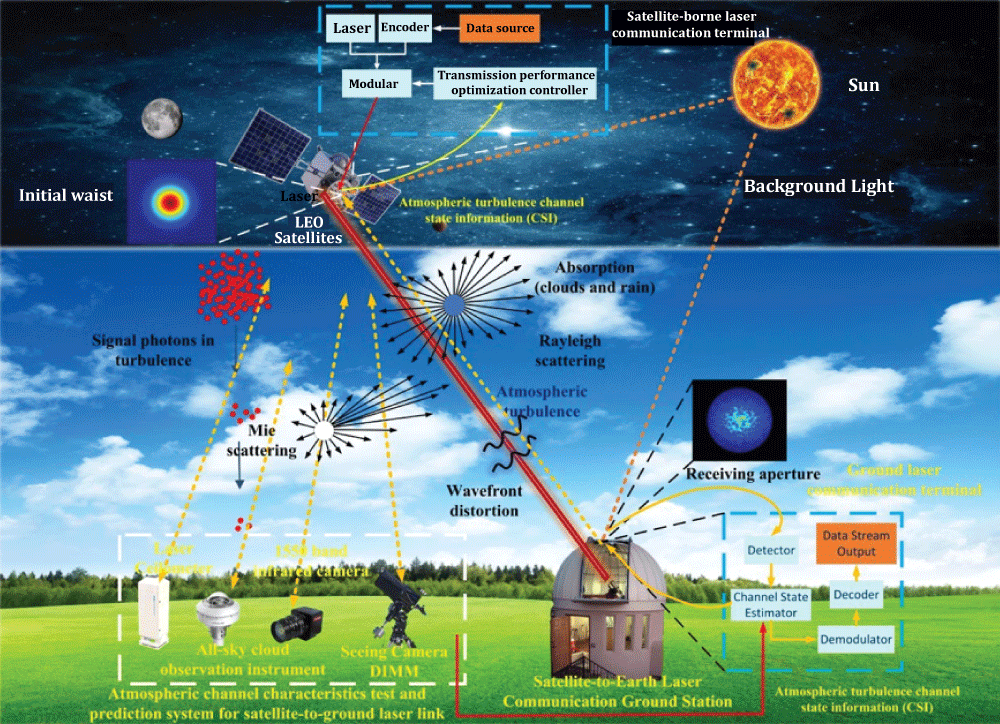 Figure 1: Schematic Diagram of Satellite-to-Ground Laser Com...
Figure 1: Schematic Diagram of Satellite-to-Ground Laser Com...
 Figure 2: Schematic Diagram of Approaches for Optimizing the...
Figure 2: Schematic Diagram of Approaches for Optimizing the...
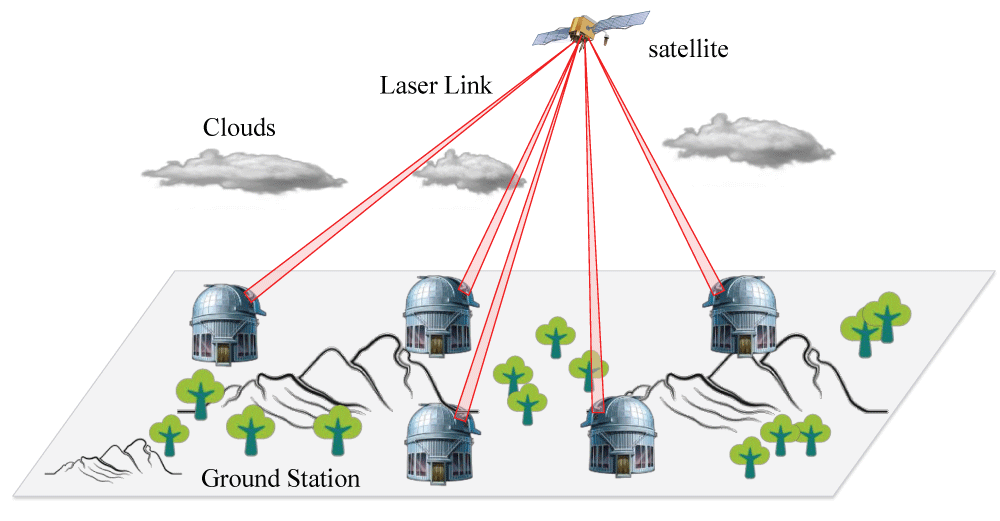 Figure 3: Optical Downlink Satellite Laser Communication wit...
Figure 3: Optical Downlink Satellite Laser Communication wit...
 Figure 4: Illustrates a schematic diagram of cloud predictio...
Figure 4: Illustrates a schematic diagram of cloud predictio...
 Figure 5: Illustrates a schematic diagram of link transmissi...
Figure 5: Illustrates a schematic diagram of link transmissi...
 Table 1: Summary of Typical Satellite-Ground Laser Link Exp...
Table 1: Summary of Typical Satellite-Ground Laser Link Exp...
Ding R, Fang T, Wang W, et al. Star-Ground Fusion Communication System: Network Architecture, Enabling Technologies, and Prototype Verification. Space Integr Ground Inf Networks. 2023;4(03):79-87.
Jiang H, An Y, Zhang Y, et al. Current Status, Development Trends, and Key Technologies Analysis of Space Laser Communication. J Aerosp Inf Syst. 2015;34(03):207-217.
Schieler CM, Riesing KM, Bilyeu BC, et al. On-orbit demonstration of 200-Gbps laser communication downlink from the TBIRD CubeSat. Free-Space Laser Communications XXXV. SPIE. 2023;12413:1241302.
Fu W. Analysis of Optical Satellite Communication Technology and Its Development Trend. SHS Web Conf. 2022;144:02013.
Hu M, Zhou Y, Zhao K, et al. Cloud Prediction Technology for Reliable Networking of Future Star-Ground Laser Backbone Links. Mobile Commun. 2023;47(10):58-64.
Erdogan E, Altunbas I, Kurt GK, et al. Site diversity in downlink optical satellite networks through ground station selection. IEEE Access. 2021;9:31179-31190.
Jiang X, Zhao S, Li Y, et al. Research on Spatial Diversity Technology for Ground Stations in Satellite-Ground Optical Communication. J Appl Optics. 2012;33(01):229-232+174.
Dai Z. Cloud Cluster Change Trend Prediction System Based on Deep Learning. Nanjing Univ. 2022.
Wang Y, Basu S. Using an artificial neural network approach to estimate surface-layer optical turbulence at Mauna Loa, Hawaii. Opt Lett. 2016;41(10):2334-2337.
Hou X, Hu Y, Du F, et al. Machine learning-based seeing estimation and prediction using multi-layer meteorological data at Dome A, Antarctica. Astron Comput. 2023;43:100710.
Wang L, Hao S, Zhang D, et al. Mode Selection Threshold for Adaptive Modulation Coding Technology in Atmospheric Laser Communication. Laser Optoelectron Prog. 2017;54(02):117-123.
Giordano C, Ziad A, Aristidi E, et al. The upgraded Calern Atmospheric Turbulence Station. Adaptive Opt Syst VIII. SPIE. 2022;12185:1868-1876.
Wang Y, Basu S. Using an artificial neural network approach to estimate surface-layer optical turbulence at Mauna Loa, Hawaii. Opt Lett. 2016;41(10):2334-2337.
Jiang Q, Liu Z, Yao H, et al. Performance of Adaptive Bit-Interleaved Polar Coded Modulation in FSOC System. Photonics. MDPI. 2023;11(1):34.
Gu Y. Research on Modulation Format Identification Technology of Satellite-Ground Laser Communication System. Univ Chinese Acad Sci (Changchun Inst Opt Fine Mech Phys, Chin Acad Sci). 2023.